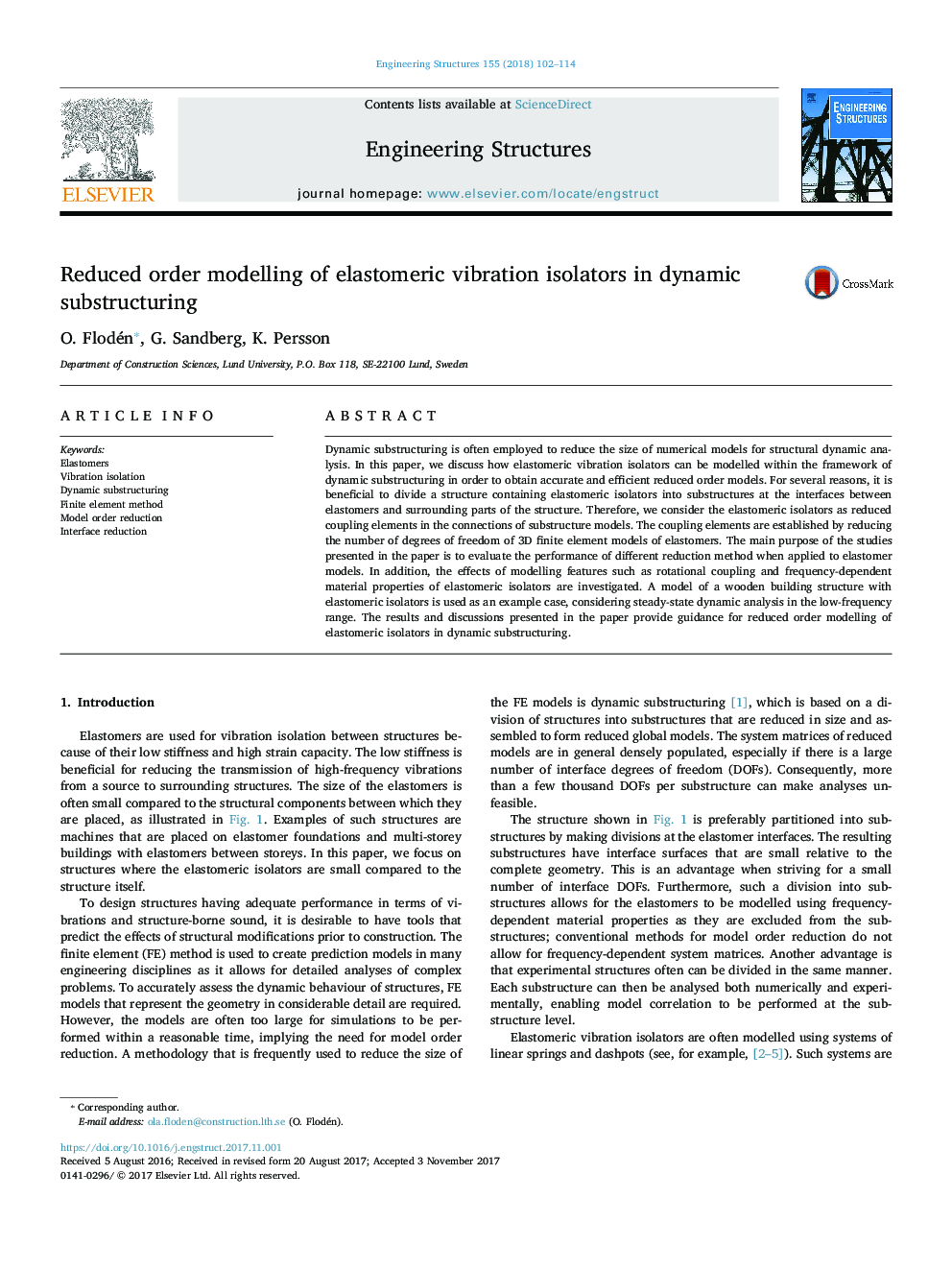| Article ID | Journal | Published Year | Pages | File Type |
|---|---|---|---|---|
| 6739028 | Engineering Structures | 2018 | 13 Pages |
Abstract
Dynamic substructuring is often employed to reduce the size of numerical models for structural dynamic analysis. In this paper, we discuss how elastomeric vibration isolators can be modelled within the framework of dynamic substructuring in order to obtain accurate and efficient reduced order models. For several reasons, it is beneficial to divide a structure containing elastomeric isolators into substructures at the interfaces between elastomers and surrounding parts of the structure. Therefore, we consider the elastomeric isolators as reduced coupling elements in the connections of substructure models. The coupling elements are established by reducing the number of degrees of freedom of 3D finite element models of elastomers. The main purpose of the studies presented in the paper is to evaluate the performance of different reduction method when applied to elastomer models. In addition, the effects of modelling features such as rotational coupling and frequency-dependent material properties of elastomeric isolators are investigated. A model of a wooden building structure with elastomeric isolators is used as an example case, considering steady-state dynamic analysis in the low-frequency range. The results and discussions presented in the paper provide guidance for reduced order modelling of elastomeric isolators in dynamic substructuring.
Keywords
Related Topics
Physical Sciences and Engineering
Earth and Planetary Sciences
Geotechnical Engineering and Engineering Geology
Authors
O. Flodén, G. Sandberg, K. Persson,
